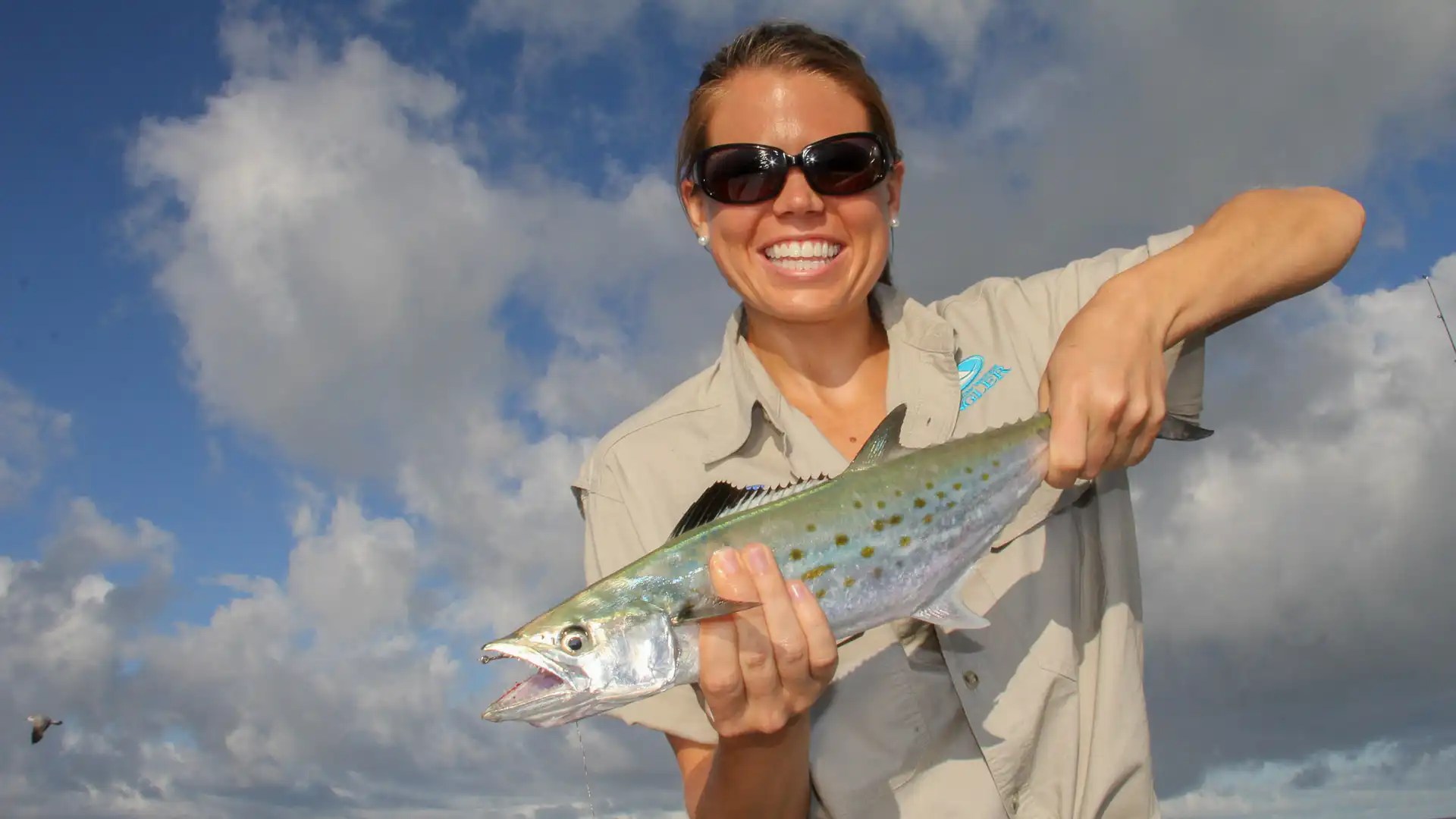
They call ’em “zingers” for the torturous sound a spinning reel makes when a big Spanish mackerel defies the drag with a speedy run. One of the most popular sportfish in coastal Gulf waters, hefty mackerel strike fast, run hard and reward diligent anglers with an unforgettable photo op.
Throughout the warmer months, mackerel of various sizes buzz throughout bays and estuaries all along the Gulf Coast. Fall tends to find schools of hungry macks driving southward — partly to flee cooling northern Gulf waters, but also to follow voluminous herds of sardines and herring as they flush out of the inner waters and head south.
This migration brings big numbers of aggressive predators within easy reach of beaches, piers, jetties and bridges. Boating anglers have the advantage of chasing down the action as mackerel drive bait schools to the surface and ravage them with white-water frenzies.
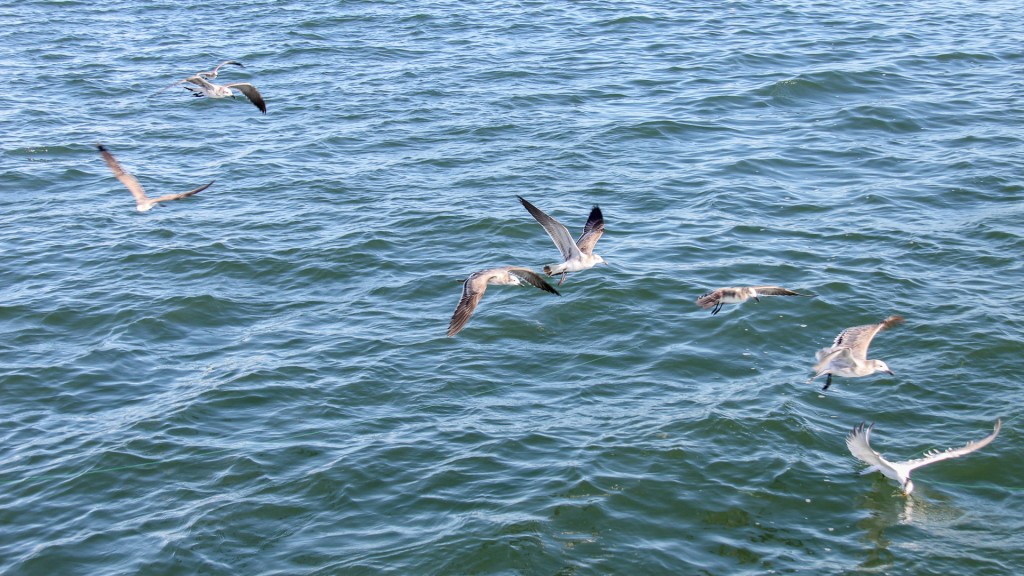
Find the fun
Birds will point you to the active areas, as pelicans, seagulls and terns take advantage of the vulnerable baitfish. As fall progresses, the frenzies become more prominent, and anglers commonly hit the water and “run the birds” to find the day’s active areas.
Another productive strategy involves anchoring on common mackerel attractions — rock piles, artificial reefs, channel edges — and chumming the area to congregate the fish. Most anglers start with a frozen chum block made of ground baitfish and concentrated fish oils. Placed in a mesh bag and hung from a stern cleat, the chum block melts in the waves to form an enticing trail of scent and appetizers that draws fish from afar.
Complement the chum block with freshly cut baitfish chunks. A fillet knife works, but a pair of kitchen or bait shears makes for quicker work.
To jump-start the action or revive a waning bite, toss handfuls of live baitfish behind the boat and watch for the violent pops, swirls and slashes when a mackerel school locates the freebies. However you chum, keep it steady to hold the macks’ interest, but don’t overdo it or you risk filling their bellies and dimming their interest.

Live bait
With a 7- to 7 1/2-foot medium-heavy spinning outfit, you can’t go wrong by fishing live threadfin herring (aka “greenbacks”) or scaled sardines (aka “pilchards” or “whitebait”) on a size 2/0 hook set through the cartilaginous bridge of the bait’s nose. Because a mackerel’s sharp teeth will slice through braided or fluorocarbon main line, anglers often add 12 to 18 inches of wire leader.
If you’re good with knots, use an Albright knot to connect the main line to a wire leader; otherwise, use a barrel swivel. Affix your hook to the leader by making a loop in the wire, sliding on the hook, forming three to four haywire twists and finishing with a few barrel wraps.
Tip: Unlike fishing line, wire leader leaves a sharp nub when you trim the tag end. Even the smallest cutters cannot trim closely enough to avoid this finger-slicing hazard, but there’s a dependable way to avoid the painful liability. After securing the hook with twists and wraps, bend the wire’s tag end parallel to the lead, then make a small 90-degree bend at the tip. This creates a handle that allows you to grip the wire (pliers are most secure) and rotate the tag end in a circle until it breaks neatly at the last wrap.
With an 8- to 10-foot cast net, you’ll catch plenty of live baitfish over grass flats, along beaches and near channel markers. In shallow water, you’ll see the silver flashes of bait schools, while surface dimples and flips are your deeper-water clues.
If you’re not comfortable with a cast net, try a “Sabiki” rig. Anchored by a 1- to 2-ounce clip-on weight, Sabiki rigs comprise a string of small gold hooks, often dressed with glow beads and quills and flashy Mylar strands, which mimic the forage baitfish seek. When they snap at the hooks, baitfish become ensnared long enough for capture.
Tip: Because sardines and herring travel in dense schools, give the Sabiki rig time to load up. Once one baitfish bites, several more will follow suit. Be patient and you may reel in a “full house” — a baitfish on each Sabiki hook.
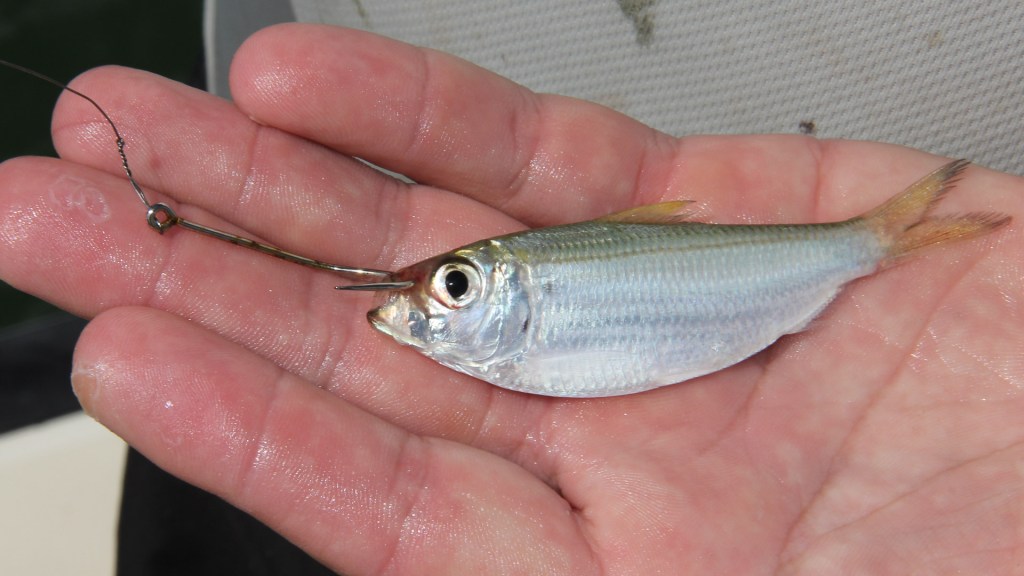
However you catch live bait, have your aerated livewell (bucket with a clip-on aerator) ready to go. Be careful to deposit live bait directly into the water, as dropping them on boat decks or pier/bridge concrete can bruise and weaken the bait. You want your bait frisky and active, otherwise mackerel lose interest.
A quicker and simpler option than baitfish, the live shrimp you’ll find at most coastal bait shops will also tempt mackerel. Hook shrimp through the tail, bottom-up, to hide the hook below your bait.
Free lining or floating live shrimp works when you know the mackerel are feeding, but because shrimp instinctively swim to the bottom, floating them under a cork allows for longer presentations. Also, a popping-style cork helps, as sharply snapping the cork across the surface creates a mackerel-attracting commotion.
Worth noting: Mackerel definitely prefer live bait, but given their slashing style, they commonly gobble chunks of lacerated baitfish that drift through the water column during a bait school attack. That said, chunks of dead bait — the ones that expire in your livewell, or frozen baitfish sold at bait shops — will also produce.
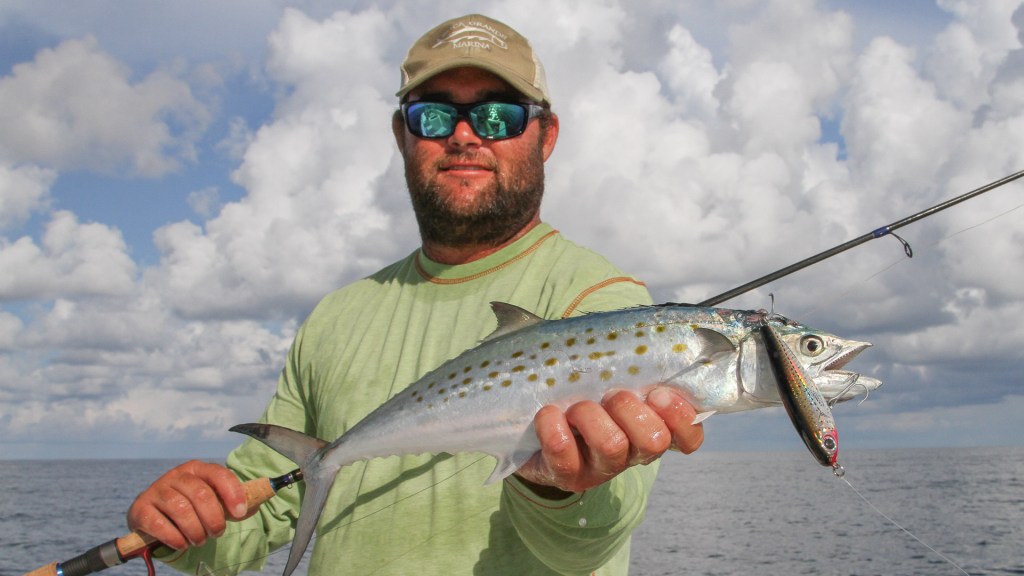
Artificial
Along with natural bait, mackerel also attack a variety of artificials. One of the most exciting ways to catch them is on topwater walkers or poppers. This technique works well over coastal reefs and rock piles, but mackerel occasionally blast a topwater intended for speckled trout over shallow grass flats.
Other options include suspending or slow-sinking baits like the MirrOlure MirrOdine or Yo-Zuri’s 3D Twitch Bait, bucktail jigs, keel-weighted pompano jigs and spoons. The latter works in a straightforward casting presentation, but pier anglers often rig a heavy sinker above a long leader with a spoon at the end. When retrieved, the weight goes to the bottom and the spoon flutters higher in the water column.
Another option: Rig a leadered spoon below a popping cork to float the bait higher in the water and attract mackerel with the same commotion you’d use in natural bait presentations.
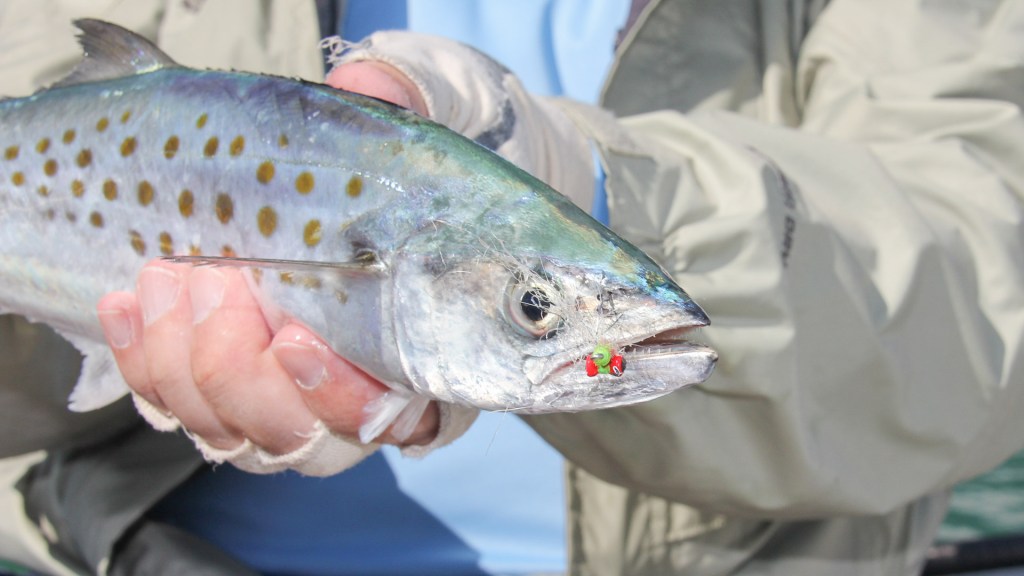
Spanish mackerel also offer a great learning opportunity for fly anglers because their aggressive nature often offers lots of opportunities to practice the hook set and fish-fighting techniques. Novices and experts do well with an 8- to 9-weight outfit with floating line and a 10- to 12-foot leader and a 40-pound bite tippet.
Baitfish patterns like a glass minnow or the classic Deceiver pattern will tempt mackerel. Poppers can also deliver the bites — often with exciting surface attacks.
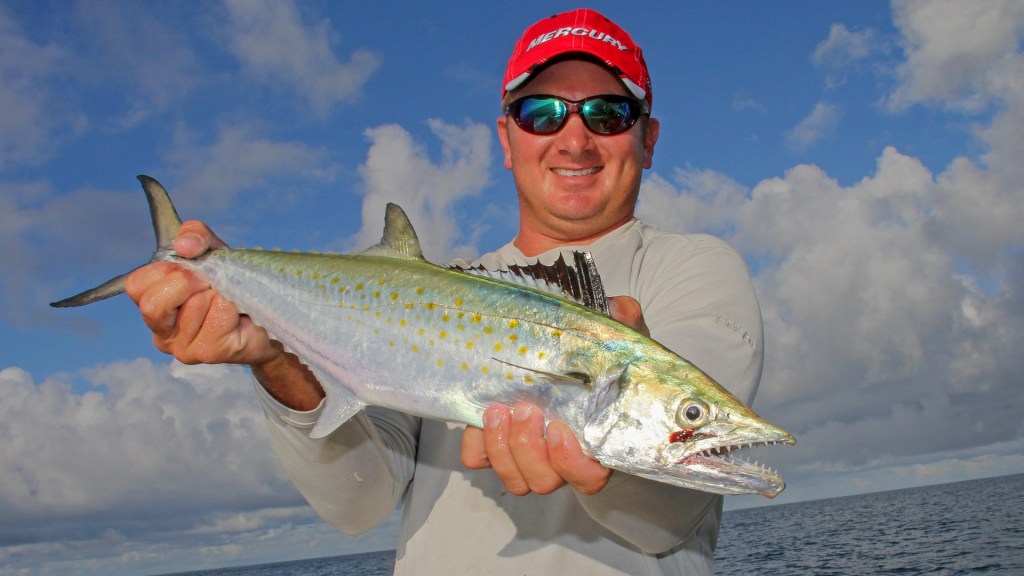
Know your fish
Along with Spanish mackerel (Scomberomurus maculatus), king mackerel (Scomberomorus cavalla) also roam coastal waters. Juvenile kings, aka “kingfish,” often resemble Spanish mackerel, but different size and bag limits apply to the two species, so it’s important to learn how to identify them.
First, young kingfish typically have dark gray spots that fade as they mature, while Spanish mackerel bear golden spots throughout their life. The lateral line on a Spanish mackerel meanders down the fish’s side, while a king’s lateral line makes a nearly 90-degree drop below the dorsal fin before continuing to the tail.
Lastly, the clearest distinction between kings and Spanish mackerel is the primary (collapsible) dorsal fin. Pull this fin up and you’ll find the anterior portion jet black on a Spanish mackerel and translucent on a king.
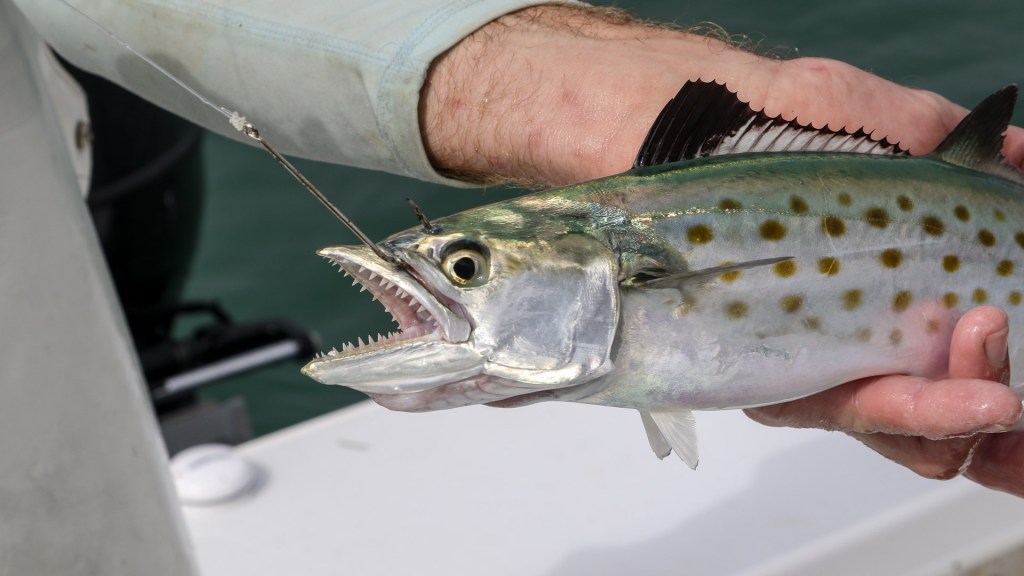
Clean and cook
If you’re keeping mackerel for dinner, ice them immediately. Two benefits here: First is freshness. Even in cooler fall weather, you don’t want to let fish sit more than a couple of minutes out of the water. Also, ice stiffens a fish — not the same as freezing — and that makes them easier to filet, as opposed to a limp form.
With king and Spanish mackerel, you’ll want to remove the dark red “blood meat” adjacent to the backbone before cooking. This bitter flesh will ruin the taste of your fillets, but it’s easy to remove.
Simply fillet the fish however you like — either trim down the backbone and around the rib cage, or cut the entire side off the fish and then cut out the rib cage and entrails — remove the skin and then slice down both sides of the center blood meat to remove this strip.
Fried, baked or grilled, mackerel fillets are best when cooked fresh — no more than a couple of days in the fridge. One of the tastiest ways to enjoy this fish is smoked, either whole or mixed with mayonnaise or cream cheese, and with your favorite seasoning to form a tasty smoked fish dip. Serve with crackers and optional hot sauce — this coastal favorite will have you eagerly planning your next mackerel trip.





